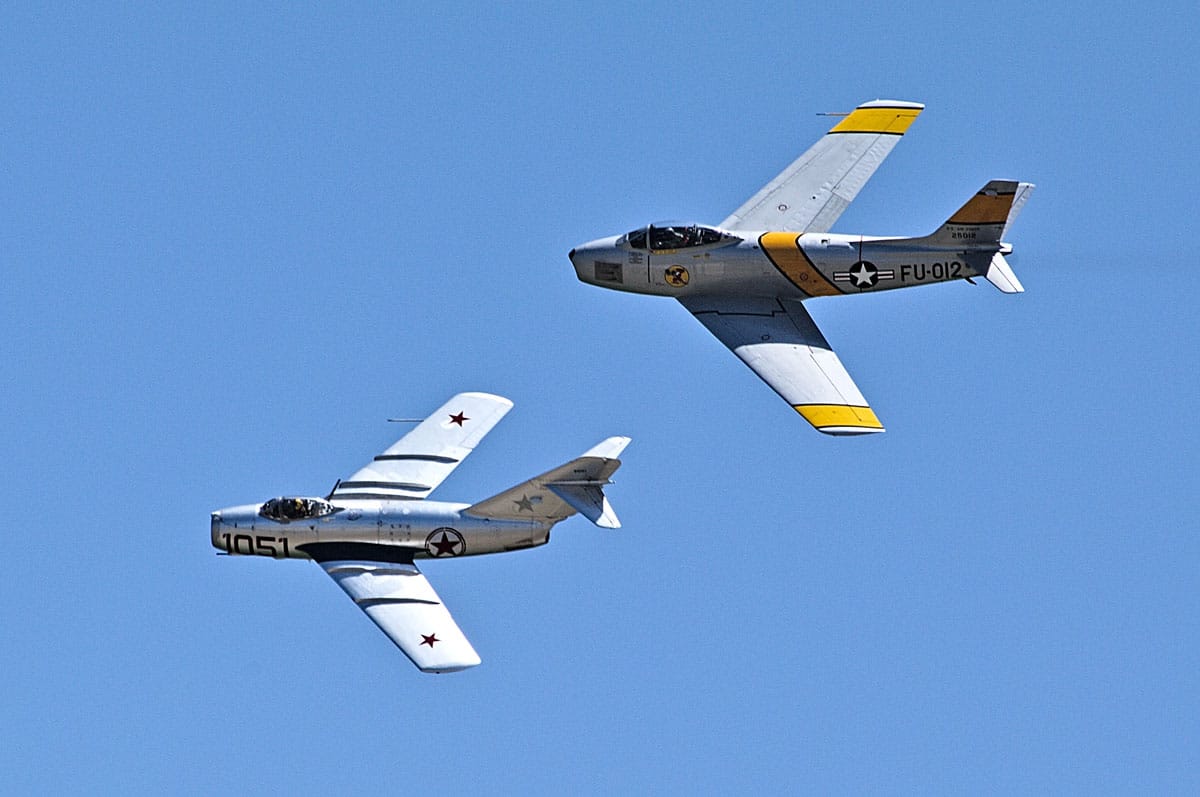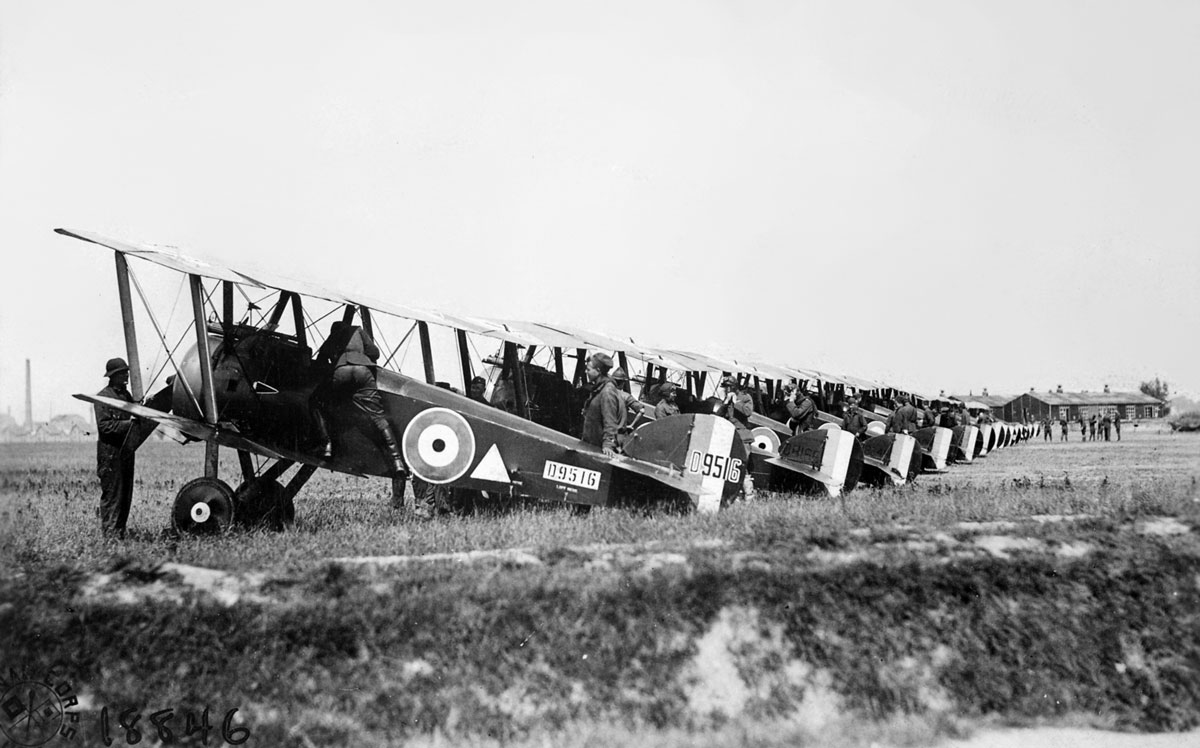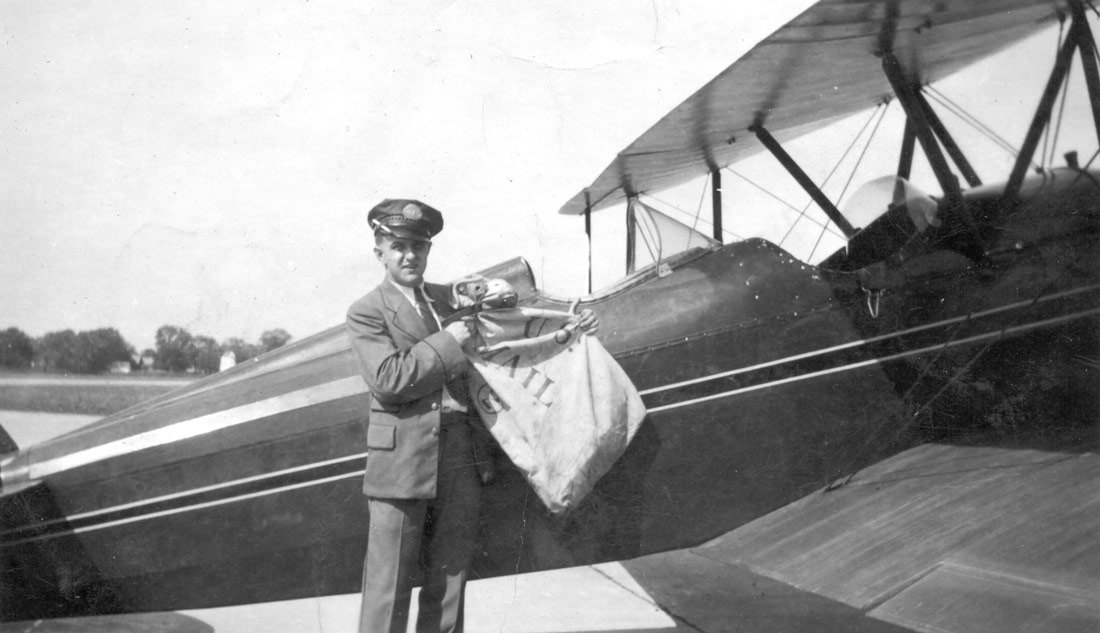Pancho Barnes Lived Her Life Throttle to the Firewall – and Wouldn’t Have it Any Other Way
On July 22, 1901, Florence Leontine Lowe was born to Florence Mae Dobbins and Thaddeus Lowe, Jr., the son of Thaddeus S.C. Lowe, a balloonist, and inventor who had pioneered American military aviation with the Army of the Potomac’s Balloon Corps during the American Civil War. Thaddeus Jr. was an outdoorsman at heart and enjoyed riding horseback in and around their massive 35 room estate in San Marino, California, a gift from his wives wealthy and staunch Episcopalian family. Florence Leontine Lowe, who would later be known as Pancho Barnes, was an uncontrollable tomboy. Her father spoiled her as the son he wished he had, while her mother cared for her brother William Emmert, a sickly boy who died when Florence was just a kid.
At ten years old, her grandfather, Thaddeus Sr. took Florence to her first airshow, igniting what would become a lifelong passion.
For the better part of the following decade, Florence behaved in a way that would turn even the most level-headed parents to the bottle. Through her teenage years, she repeatedly ran away, once to Tijuana on horseback, and was in and out of three different prep schools and religious private schools.
Veterinarian to Arranged Bride to Unhappy Mother
 After graduation, Florence announced to her disapproving family that she wanted to become a veterinarian, a testament to her lifelong love of animals. Her mother responded by enrolling her in art school (as it was more ladylike), and her grandmother responded by seeking out a suitable, respectable husband, and arranging a marriage.
After graduation, Florence announced to her disapproving family that she wanted to become a veterinarian, a testament to her lifelong love of animals. Her mother responded by enrolling her in art school (as it was more ladylike), and her grandmother responded by seeking out a suitable, respectable husband, and arranging a marriage.
In what might be the worst idea of the century, Florence was married off at 19 to Reverend C. Rankin Barnes in January 1921. It suffices to say that there wasn’t a single spark. Through diary entries and tales from close friends, we’ve learned that the first time they kissed was at the marriage ceremony, and the only time they were intimate was on their honeymoon. Nine months later, the unhappy couple had a son, William E. “Billy” Barnes.
Motherhood suited Mrs. Florence Barnes just as well as you’d expect, and less than three years later, after the death of her own mother, she ran away and roamed the country. She had two affairs on her voyage.
Pancho Barnes and Living La Vida Loca in South America
When her mother died, Florence was left with a hefty inheritance of about half a million dollars, approximately $7 million dollars today. She used the money to fuel the party lifestyle she would maintain until her death. First, she traveled to South America on a cruise, and returned only for a short time, in which she would throw parties in her mansion that would sometimes go on for weeks.
Ah hell. We had more fun in a week than those weenies had in a lifetime.
Florence returned to South America disguised as a man so that she could get a job on a banana boat and earn some money exploring. Soon after pulling away from the dock, the crew discovered that instead of transporting legal goods, they were smuggling guns and ammunition to the revolutionaries fighting in Mexico. Upon reaching their destination, the boat was boarded by armed guards, and the crew was held hostage for six weeks. Never one to play it safe, Florence and Roger Chute, the ship’s helmsman, were the only two to escape after stealing a horse and a burro and riding for their lives.
On their 250 mile walk from Mexico City to Veracruz, Florence joked to Roger that he looked like Don Quixote, to which he responded, “Then that makes you Pancho,” mistakenly referencing Don Quixote’s squire Sancho Panza. When Florence tried to correct him, Roger replied that he liked Pancho better anyway, and Florence agreed, so the name stuck.
Eventually, the two made it back to California, after stowing away on a boat, and through connections at the Amercian Embassy, finding a spot on another boat and landing in New Orleans, then walking, hitchhiking, and train-hopping the 1,700 miles home.
Pancho Barnes Takes Flight
A couple years of partying and being a bad wife and an absent mother later, in 1928, Pancho decided she wanted to learn to fly while driving her cousin to his flight lessons. She started taking flight lessons from a WWI pilot, Ben Caitlin (her cousin’s instructor), in an airplane that would give the modern day FAA a heart attack. There was only one instrument (an oil gauge), and their “artificial horizon” was a key chain hung from the control panel. They looked out the window to gauge altitude and dipped a string in the fuel tank to estimate how long they could fly. Naturally, Pancho fell in love.
Pancho Barnes soloed after just six hours of instruction and shortly after bought herself a Travel Air biplane for $5,500. On her first cross country, a flight to San Francisco, the engine gave her some serious problems which resulted in a total of eight emergency landings.
She then immediately jumped into exhibition flying, such as barnstorming and air races. In 1929, she crashed into a truck on the runway at the Women’s Air Derby (nicknamed the Powder Puff Air Derby) but returned the following year (sponsored by Union Oil) to win the race. Flying in a Travel Air Type R Mystery Ship, a low-wing racing plane with a top speed of 235 mph, Pancho broke Amelia Earhart’s women’s world speed record in that same race by maintaining an average speed of 196.19 mph.
When her sponsorship with Union Oil Company ended, Pancho took her plane and her bravado to Hollywood, where she made quite a name for herself as a stunt pilot; the first female stunt pilot in Hollywood.
Why Are there So Few Female Pilots?
On a recent trip to Oklahoma City, Oklahoma, I stopped into the Ninety-Nines Museum, a museum dedicated to the history of female pilots, for a tour with museum director Denise Neil-Binion. She is a part-time employee with the museum amongst other volunteers with a passion for preserving women’s history in aviation. Neil-Binion had many stories to share – from the first women gaining her wings all the way to present-day leaders paving the way for girls in the future. The museum is located above the Ninety-Nines International headquarters building [Click to read more…]
The Original Hell’s Angel Started the W.A.R.
In 1929, she provided authentic airplane sounds for Howard Hughes’ landmark movie Hell’s Angels by flying past sound equipment tethered to balloons. This was one among several other 1930’s air adventure films she did aerial work for. In 1931, Pancho started the Associated Motion Picture Pilots, one of Hollywood’s first unions, created to protect film industry stunt pilots and promoted flying safety and standardized pay for aerial stunt work.
Over the next couple years, Pancho worked with other female aviators to organize the Women’s Air Reserve (the WAR). The goals, in addition to proving women could help serve their country just as well as men, included the hope that the success of the organization would lead to equal flying qualifications for aviatrixes, and encourage more women to pursue aviation. Pancho trained the ranks in things like parachute drops and battlefield medic skills. In 1934, she and five other members made the first women’s cross-country (across the whole United States) to promote the WAR.
Despite the fact she was constantly working, her ceaseless partying and entertaining a mansion-full of celebrities and hard-drinking pilots coupled with questionable investing practices (Pancho reportedly used her house and other properties as collateral in order to buy additional real estate without devising a way she could make the payments on those investments) and the Great Depression eventually ate up what little fortune she had left. She was forced to rent out her childhood home, the San Marino estate, before selling it, and traded her LA apartment building for a four-room ranch house in Antelope Valley, CA. The ranch was situated on an 180-acre alfalfa ranch near Muroc Dry Lake, and near Muroc Field, an Army Air Corps training encampment which would eventually become Edwards Air Force Base.
Moving to the Middle of Nowhere, Finding the Love and the Air Force
Surprisingly, Pancho’s now 12-year-old son Billy decided to move in with his mother for the first time and joined her on the ranch for a little taste of freedom. In return for his help around the ranch, Pancho did her best to act like the mother she never was.
Pancho didn’t know anything about farming but had a knack for raising animals, so she expanded the ranch with dairy cows and pigs. Soon after, the Army Air Corps encampment was built up into the Muroc Army Air Field, and Pancho began to turn her ranch into a resort for off-duty pilots. Slowly, she added air conditioned rooms, private baths, and a bar. In 1939, the Civilian Pilot Training Program was established to train pilots, and, jumping on the opportunity, Pancho got a government contract to supply planes and instructors for the local flight school. It was at this time Reverend Barnes finally asked for a divorce, and she shortly after married Robert Hudson “Nicky” Nichols, Jr., a student at the pilot training program. The marriage lasted two weeks.
By 1941, she could afford to improve her resort even more and added amenities such as a swimming pool, two airstrips, a hangar, a race track, and even a fishpond in the shape of the Air Force emblem. Pancho advertised in the Los Angeles newspapers for families to enjoy her “modern flying dude ranch” for $49 a week, per person, meals included.
Birth of the Happy Bottom Riding Club

Eventually, Pancho Barnes started longing for the good ol’ days when her Hollywood and test pilot friends would party together, and she reinvented her resort into a club called the Happy Bottom Riding Club. The Air Force Test Pilot School was relocated nearby, building up her business even more. Pancho would offer test pilots a free steak dinner for successfully breaking the sound barrier.
Every night at the Happy Bottom Riding Club, Pancho served pilots, Presidents of private aircraft corporations, and high-ranking military officials, including her old friend Jimmy Doolittle, now a three-star general. General H.H. Arnold, the commander of the Army Air Force, and Chuck Yeager himself were also frequent visitors. The walls were covered with pictures of pilots and aircraft prototypes, all autographed by her guests. Pancho had hired hostesses to wait tables and entertain the men, which she maintained was just by “dancing with them,” vehemently denying she was running a brothel. Liquor was flown in illegally from Mexico and flowed generously to those who enjoyed the cigar-smoking Pancho’s wild tales.
We’re not responsible for the bustling and hustling that may go on here. Lots of people bustle, and some hustle. But that’s their business, and a very old one.
Pancho Barnes: Man-Eater and Her Failing Health
In 1944, she met Don Shalita, a young dancer who moved to the ranch as he realized his career was winding down. A year later, Pancho and Don married, which ended up being a record breaking arrangement for Pancho. She lived with her husband for four months before kicking him out; the longest she ever lived with a husband.
Pilot Eugene “Mac” McKendry had recently moved out to Happy Bottom Riding Club after returning home from a tour of duty overseas to be greeted by a divorce notice. He was given custody of their son but had nowhere to go, and soon found a home on the ranch with Pancho.
In 1946, most likely due to the excessive drinking and smoking, Pancho suffered from hypertension and experienced a retinal hemorrhage (bleeding in the back of the eye). She stubbornly refused treatment until she collapsed and a ranch hand called a doctor out to the ranch. With medicine being what it was during that time period, Pancho didn’t have many options for treatment, so she agreed to undergo an experimental surgery called sympathectomy, “the surgical cutting of a sympathetic nerve or removal of a ganglion to relieve a condition affected by its stimulation.”
The surgery required two separate operations with 18” incisions on both sides of her spine, as well as the partial removal of four ribs. During recovery, she caught pneumonia, leaving her bed-ridden. Mac was by her side for the entire length of her recovery.
Fourth Time’s a Charm… Right?
In June of 1952, after Pancho Barnes had healed and was back on her feet, she began planning her fourth wedding to Mac, her friend, and lover. Pancho was 51, Mac was 32. The ceremony itself was a brief, no-nonsense affair, taking less than a minute. Commander Al Boyd gave Pancho away, and Chuck Yeager stood up as her attendant, and there were about 650 guests in attendance. Before the wedding banquet, the couple got married again in a Native American ceremony officiated by Chief Lucky and Little Snow White of the nearby Blackfoot tribe. According to Debbie Foulkes, historian of Forgotten Newsmakers, the wedding feast included “four whole roasted pigs, 80 pounds of potato salad, 16 gallons of Jell-O and a 50-pound wedding cake.”
When the Good Times End

Unfortunately, the good times didn’t last. A change of command at the Edwards Air Force Base led to a legal battle that lasted years and destroyed the success of the Happy Bottom Riding Club. The Air Force required a new runway to accommodate hypothetical atomic-powered aircraft, and the runway would need to run directly across Pancho’s ranch. The Air Force offered Pancho Barnes the same price she paid for the basic 4-room ranch house and alfalfa farm all those years ago, which was drastically lower than the true worth of her resort, with all of the additions and modifications she had labored over for years.
She refused their offer and requested a re-appraisal, which was granted. However, during the re-appraisal, the new commander of the base accused her of running a brothel on her ranch, and all military personnel were forbidden from visiting. That lack of income was devastating to the Happy Bottom Riding Club, bringing the value way down, and Barnes responded with a lawsuit against the Air Force to “roust out the scoundrels in the government who would perpetrate such an injustice.” Apparently, she planned to depose, under oath, the various officers and personnel on the base, which she felt would lead to her name being cleared. In 1953, at the height of the court battle, a “mysterious fire” burned her ranch, further bringing the value down to a level close to what the Air Force had originally offered.
Harriet Quimby: Aviation Pioneer and Trailblazing Icon For Female Pilots
 It’s not often that the world is granted the gift of a person as intriguing and impactful as Harriet Quimby. In fact, due to the lack of historical documents such as birth certificates, Harriet was so beloved that many communities all over the United States claimed that she was born in their city. It’s generally accepted that she was born in Coldwater, Michigan on May 11, 1875. (She would later claim she was born in Arroyo Grande, California in 1884, however, photographic evidence from her later [Click to read more…]
It’s not often that the world is granted the gift of a person as intriguing and impactful as Harriet Quimby. In fact, due to the lack of historical documents such as birth certificates, Harriet was so beloved that many communities all over the United States claimed that she was born in their city. It’s generally accepted that she was born in Coldwater, Michigan on May 11, 1875. (She would later claim she was born in Arroyo Grande, California in 1884, however, photographic evidence from her later [Click to read more…]
Undeterred, Barnes continued fighting, determined to receive fair compensation for her ranch and to clear her name. The court eventually found in her favor, and she was awarded $375,000 for her property and the business and the Air Force cleared away all allegations of “ill-repute.” Amazingly, after that long and difficult battle, the proposed runway was never built.
Pancho’s years of partying and excitement were finally catching up to her, and life decided to kick her while she was down. She was diagnosed with breast cancer and had to undergo a double mastectomy. Mac, though he stuck around for the surgeries, was pulling away, and their relationship crumbled. After Mac moved out, Pancho eventually (in 1962) asked for a divorce.
After the resolution of the lawsuit, Pancho began work on an autobiography. An old friend let her live in a 20 by 25 square foot house in California, where she began breeding Yorkshire terriers when not traveling for speaking arrangements at local clubs and banquets. In 1971, Pancho returned to the Edwards Air Force Base when her friends, including Buzz Aldrin, threw her a 70th birthday party.
The Tragic Death of Pancho Barnes
That was one of the last positive events in Pancho Barne’s life, and in the spring of 1975, she died. The only reason this was discovered was she never showed up for a speaking engagement at the annual “Barnstormers Reunion” on April 5, 1975. A friend had called her on March 30th and been unable to reach her, and after she missed the engagement, her son finally went to go check on her. She was found on the floor of her derelict home, surrounded by filth and animal waste, already several days dead. Her breast cancer was likely the ultimate cause of her death.

Her son Billy got permission from the Air Force to fly over their field at Rancho Oro Verde to scatter her ashes, and witnesses on the ground said that as the ashes drifted downwards, a crosswind rose up and carried the ashes back into the cockpit of the small Cessna. She was survived by both her last ex-husband Mac and her son Billy for a number of years until Billy died piloting a North American P-51 Mustang in October 1980. Her business, Barnes Aviation of Lancaster, was run by her son until the end of his life and is still in operation as a general aviation business today.
Every year, the USAF Test Pilot School at Edwards Air Force Base hosts a Pancho Barnes Day at the site of The Happy Bottom Riding Club. In remembrance of her hard-partying lifestyle, the party has limited BBQ “family hour” before turning into an adults-only bash.
When you have a choice, choose happy!
Featured Image: Pancho Barnes and her Travel Air Type R Mystery Ship
















Marvellous back storey..having read Chuck Yeagers autobiography.